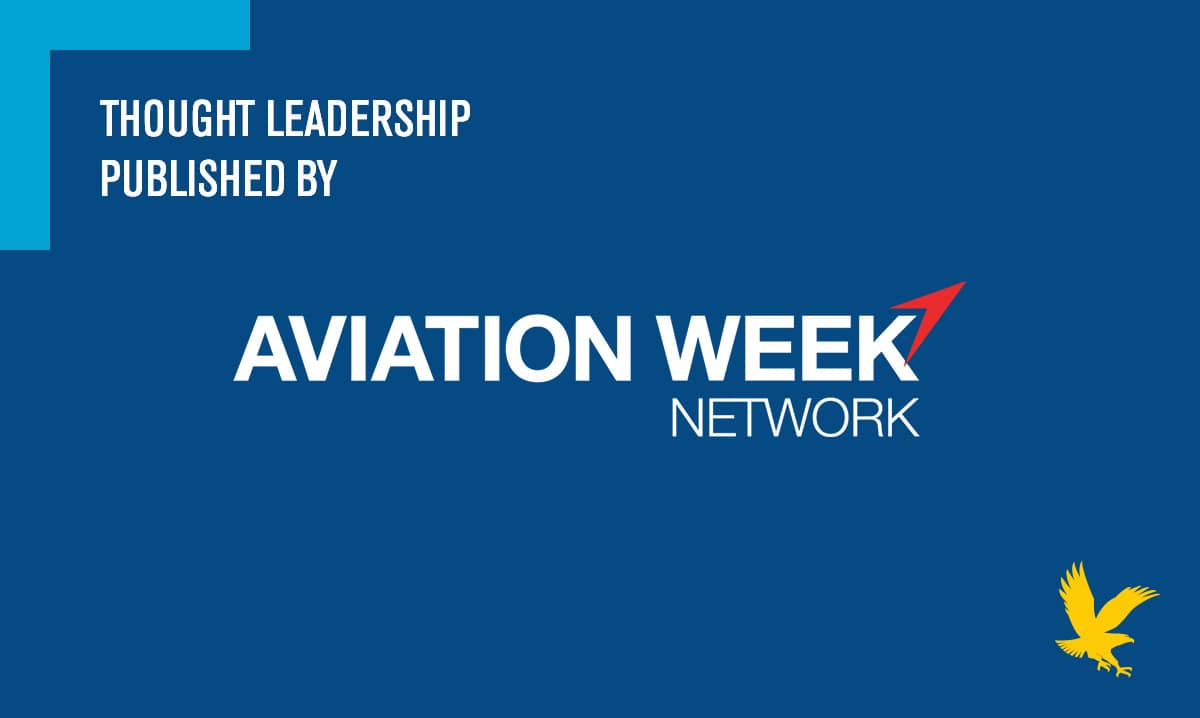Embry-Riddle President Discusses Preparing a Skilled Commercial Space Workforce in Aviation Week

In his latest Aviation Week essay, Embry-Riddle Aeronautical University President P. Barry Butler discusses the future of commercial space travel.
“Someday, space travel may be just as routine as airline travel is today,” he concludes in an essay published October 28, 2021. "Universities, working in partnership with industry and government, must ensure that a highly trained commercial space workforce is ready for blastoff.” Subscribers to Aviation Week can log on to access his latest essay online now. The article is also provided below.
How To Prepare A Skilled Commercial Space Workforce
By P. Barry Butler
As Inspiration4's beautiful imprint blossomed across the night sky on Sept. 15, it surely inspired countless young people, just as Sputnik’s 1957 flyby induced a starry-eyed appreciation for science and technology. At Embry-Riddle Aeronautical University, where I work, many were mesmerized by the journey of Inspiration4, particularly since half of the history-making civilian crew were our alumni. The success of Inspiration4 showed us what industry can accomplish—given tenacity, perseverance and the right partnerships—and it suggested to a wider public that space is within reach. As the growth of the commercial space sector keeps accelerating, now is the time to prepare a highly skilled workforce.
Large-scale space tourism remains aspirational at this moment. Inspiration4 cost more than $100 million, and the crew trained for about six months. The flight would not have been possible without the automated spacecraft technology of SpaceX’s Crew Dragon or the extraordinary contributions of engineers and operators on the ground who provided the autonomous vehicle capability necessary for mission success.
Yet, commercial space has been advancing at an astonishing pace. The current space economy now tops $400 billion and may grow to more than $2.7 trillion over the next 20 years, Bank of America estimates. We have meanwhile seen a major decline in the cost to launch a kilogram of payload into low Earth orbit, from $54,500/kg when the space shuttle first launched in the early 1980s to $2,720/kg for SpaceX’s Falcon 9, according to Harry W. Jones of NASA’s Ames Research Center. The timeline for launch has drastically decreased, too. For example, NASA commercial payload provider Intuitive Machines reports that its timeline for a lunar mission is about 24 months, versus a decade in earlier times.
Space has also become a far more attainable career choice. Now, with cubesats, frequent launches and suborbital flights such as those launched by Blue Origin, students can design, build and test something that actually reaches space. Opportunities also abound in space business, operations and the policy side of the emerging commercial space economy.
Not surprisingly, today’s students are taking a keen interest in space. When Embry-Riddle students are asked about their career goals, “I want to go to Mars” is not an uncommon response. Students flock to prime viewing spots on our Daytona Beach, Florida, campus whenever a rocket blasts off from Cape Canaveral. At career fairs, lines for commercial space companies are among the longest. Within our Aerospace Engineering program, for the first time ever more than half (53%) of our 1,900 undergraduates are on the Astronautics (space) track this semester. Our undergraduate Spaceflight Operations degree and a master’s program in Space Operations are similarly popular.
Once enrolled, students can work on projects such as the EagleCam, a camera that will allow them to capture the ultimate selfie—the first third-person shot of a spacecraft touching down on the Moon. The student-designed EagleCam, to be deployed from Intuitive Machine’s Nova-C lunar lander, should return significant data on dust plumes, Wi-Fi signal degradation, lunar topography and more, thanks to a NASA Commercial Lunar Payload Services contract.
The newest branch of the U.S. military, the Space Force, is also motivating students to reach for the stars. Last year, six Embry-Riddle ROTC cadets were selected to commission as space operations officers. They are likely to play a role in protecting national assets and tracking objects in far-reaching realms beyond geostationary orbit and in cislunar space.
The recent suborbital and orbital flights by Virgin Galactic, Blue Origin and SpaceX marked milestones in the development of private human spaceflight. While commercial space travel is not yet considered common carriage akin to airlines and remains an inherently dangerous activity, the future is clearly here. Efforts to cultivate scientists and engineers with unique technical, cybersecurity, legal, safety and organizational knowhow must keep pace with the growth of commercial space business. Scholarships, internships and co-op opportunities, intensive mentoring and research funding are key ingredients in ensuring the success of promising students eager to launch space careers.
Someday, space travel may be just as routine as airline travel is today. Universities, working in partnership with industry and government, must ensure that a highly trained commercial space workforce is ready for blastoff.
